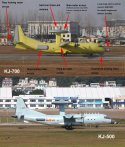Maybe the enemy fighter can't get any closer due to the AWAC's fighter escorts?An AAM's maximum range can change based on a lot of factors - It's not a fixed parameter.
Besides - Who says I want to launch my AAM at you only from the maximum attainable range of my AAM? I can either have other ways where I could maximize my AAM's engagement range and no-kill zone, or I can let other allied units that are better positioned and/or having even longer-ranged missiles to do the job for me. I'd rather keep my AAM for situations where the chances of my AAM hitting my target is highly favorable, rather than to increase the chances of wasting my AAM.
I see you're focusing on the "launching AAM against the enemy aircraft flying at the edge of the AAM's maximum range" notion, which is not how air combats are typically performed.
I just gave one possible scenario. There can be others. Being more maneuverable is always a benefit regardless.


